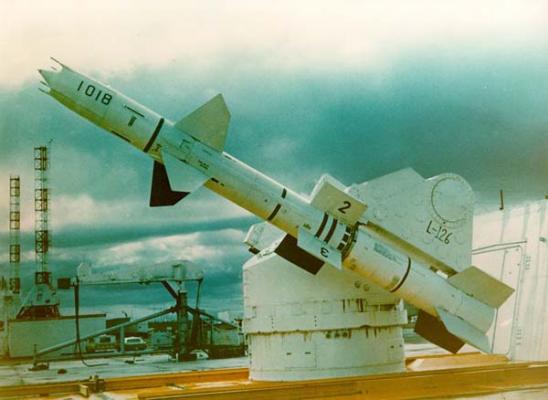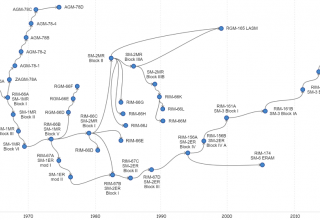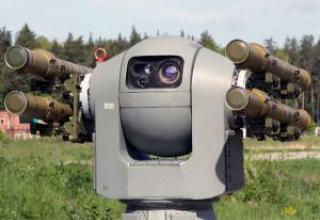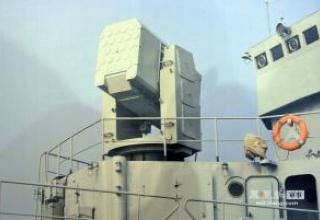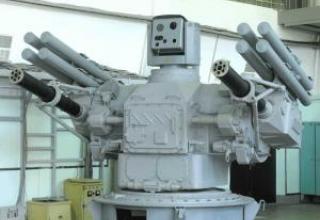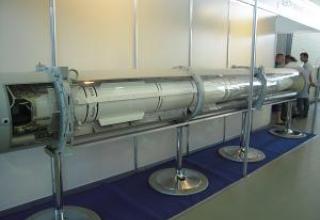Ship's air defense missile system "Talos", adopted by the U.S. Navy in 1956, was designed for the armament of large ships in the fleet, mainly air defense cruisers. It was the most complex and expensive of all the systems available in the U.S. Navy at the time.
Testing of the complex began in 1951 at the White Sands range. At the range was built test facility number 35, owned by the U.S. Navy. This site was the site for experimental launchers to test ship's anti-aircraft missiles, and was named USS Desert Ship.
The first ship armed with the Talos SAM system was the cruiser "Galveston" (USS Galveston), from which in February 1959 was launched the first SAM system "Talos".
Composition:
The Talos SAM system includes the following combat vehicles:
- the rocket controls:
- Target tracking radar,
- Rocket escort radar,
- semi-active radar homing head;
- twin launcher;
- anti-aircraft guided missile RIM-8 "Talos".
Anti-aircraft missile RIM-8 "Talos" - two-stage, supersonic, with a detachable in flight accelerator casing. The tandem-positioned RIM-8 "Talos" launch hull is separated after fuel burnout. The RDT is multi-mode, running on kerosene fed into the combustion chamber by a turbo-pump driven by a raging air stream. Starter and marching steps have stabilizers.
At the initial and middle stages of the RIM-8 trajectory, it was guided to the target by the three-point method. Semi-active radar guidance was used to correct errors in the final section of the trajectory.
The missile could be launched from an above-water target located within the ship's radio-horizon. To avoid interference associated with the radar beam reflection from the water surface at low angles, the ZUR Talos went up to a higher altitude and then dive almost vertically to a target illuminated by the SPG-59 radar beam. Experimental firing from the Oklahoma City cruiser on an obsolete destroyer in 1968 demonstrated that a massive missile, even with an inert warhead flying at Mach 2.5, has enough kinetic energy to sink the ship.
The missile can be equipped with either a conventional (SAM-N-6b/RIM-8A) or nuclear warhead.
The missile equipped with a 0.5 kiloton W-30 nuclear warhead (from declassified U.S. Navy forms, according to other well-known sources - 2-5ct) was designated SAM-N-6bW/RIM-8B. SAM-N-6bW/RIM-8B was intended for firing at group air targets at high or medium altitudes. The radius of engagement of the nuclear BC is up to 300 meters.
The large dimensions of the SAMs allow their use only on cruisers and destroyers. The cruiser with a displacement of 15 thousand tons can carry almost 100 missiles. The missiles are stored in the cellars in a horizontal position without stabilizers and a launch engine. From the cellars with the help of an elevator they are delivered to the pre-start preparation post.
Rockets prepared for launch through large windows in the aft wall of the superstructure are fed to a twin launcher, whose guides are brought to zero elevation angle.
The entire feeding and charging process is automatic, with the feed system associated with the fire control system selecting the directional sounders with the desired BC (see photo).
Characteristics:
| Defeat zone, km: - at a distance - in height |
120 between 3 and 27 |
| ZUR Flight Speed, M | 2,5 |
| Mass of the rocket, kg | 3180 |
| The length of the rocket, m | 10 |
| The diameter of the rocket, m | 0,76 |
| Wingspan, m | 2,4 |
| Number of steps | 2 |
Testing:
Strela-1 and Strela-1M complexes were widely exported by the USSR abroad. They were supplied to the countries-participants of the Warsaw Pact, to Yugoslavia, to the states of Asia (Iraq, Syria, North Yemen, India, Vietnam), Africa (Algeria, Angola, Benin, Egypt, Guinea, Guinea-Bissau, Libya, Madagascar, Mali, Mauritania, Mozambique) and Latin America (Cuba, Nicaragua), confirming their rather high efficiency and ease of use during military conflicts and during training firing.
The first use of the Arrow 1 SAM system was in the Bekaa Valley in southern Lebanon in 1981. In December 1983, these SAMs were shot down by American A-6E and A-7E aircraft (the latter, probably, was hit by portable SAMs of Strela-2 family). In the same year, several Arrow 1 SAM systems were captured by South African invaders in southern Angola.

